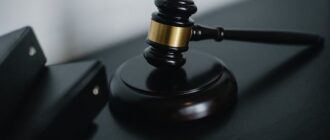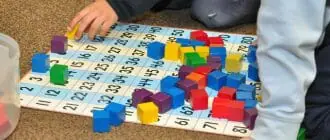There is something magical about reading a Dr. Seuss book to a group of children. They are instantly engaged and excited by the rhyming patterns, silly words, and fun stories. Dr. Seuss is certainly a treasured author and an important figure in the lives of many children (and teachers).
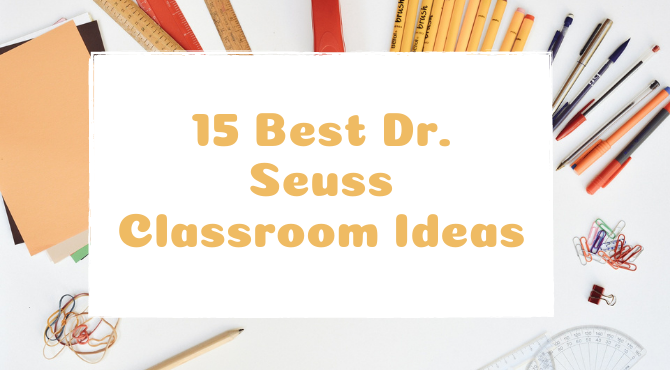
Many teachers are always looking for new and exciting ways to incorporate his books into the lessons because they know how engaged their students will be in learning. We’ve pulled together a list of 15 of the best activities you can do with your students that center around the amazing works of Dr. Seuss. You’ll find the perfect task whether you are looking for something for Read Across America Day or any other day of the year.
Who Is Dr. Seuss?
Did you know that Green Eggs and Ham was written as the result of a bet? Dr. Seuss’s friend bet him that it would be impossible for him to write a book using just 50 words, which he was indeed able to do.
- Seuss, whose real name was Theodor Suess Geisel, was born in Springfield, Massachusetts on March 2, 1904. Dr. Seuss got his start illustrating different magazines and creating illustrations for various advertising campaigns. A while later, he decided he wanted to write a children’s book. His first book, “And to Think That I Saw It on Mulberry Street,” was rejected almost 30 times before finally being published.
- Seuss’s children’s books are well-known for their strange, yet interesting, characters, their humor, and the unique way Dr. Seuss used words to tell a story. In his time as an author, Dr. Seuss wrote countless books that have become family favorites. A few his most popular books include: “The Cat in the Hat,” “One Fish, Two Fish, Red Fish, Blue Fish,” “Green Eggs and Ham,” “How the Grinch Stole Christmas,” “Horton Hears a Who,” “Oh, The Places You’ll Go,” and “Fox in Socks.”
- Seuss definitely led a very interesting life. If you’re interested in learning more about his life, check out this video from Biographics:
Best Dr. Seuss Classroom Ideas
- Where is Horton? →
- Cat’s Word Find →
- Opposites with Old Fish, New Fish →
- Feet Feet Feet →
- Counting Hands →
- D – R. S – E – U – S – S →
- The Tall and the Small →
- Cat’s Hat Cake →
- How Many Hats? →
- Pin the Eggs →
- Oh Say Can You Rhyme? →
- An A-maze-ing Journey! →
- World of Seuss Word Search →
- Watch Lorax and write an essay “How I can save the Earth” →
- Grinch Party Poppers →
Below you’ll find 15 of the best Dr. Seuss ideas that you can use in your classroom. For each idea, we’ve provided a brief description of the task and highlighted the materials you’ll need to prepare before implementing it with your students.
1. Where is Horton?
What You Will Need to Prepare:
- “Horton Hears A Who” by Dr. Seuss
- 1 copy of “connect the Dots to Horton!” per student
- Pencils/crayons
Description: This fun connect the dots activity would be the perfect follow-up for a group of young learners who is just read the book “Horton Hears a Who.” To complete the connect the dots, students will need to be able to count and identify numbers between 1 and 50. After students complete the picture by connecting the dots, they can color in the image of Horton they created.

If you are looking to extend this activity and during a math class, you could have students draw a quick picture of one of their favorite Dr. Seuss characters and place a blank piece of paper over it to create their own connect the dots puzzle for a classmate to salt.
Best for: Early elementary school students working on counting to 50.
2. Cat’s Word Find
What You Will Need to Prepare:
- “The Cat in the Hat” by Dr. Seuss
- 1 copy of “The Cat’s Word Find!” per student
- Pencils/crayons
Description: Students that love word finds are sure to enjoy this task. After reading “The Cat in the Hat,” students will need to look for the nine words that are hidden in the puzzle.
If you’re looking to extend this activity, students could create sentences using the words from the word find. Another extension idea would be to have students create their own word finds with other words from “The Cat in the Hat” that their classmates could try to solve.

Best for: Early elementary school students.
3. Opposites with Old Fish, New Fish
What You Will Need to Prepare:
- “One Fish, Two Fish, Red Fish, Blue Fish” by Dr. Seuss
- 1 copy of “Old Fish, New Fish” per student
- Pencils/crayons
Description: if you are working with your young learners on the concept of opposites, this task is a great option to consider. First, you should read the book “Old Fish, New Fish” to the class. In this book, Dr. Seuss uses lots of adjectives to describe the different fish. You can first discuss what some of these adjectives, such as sad, fast, loud, or quiet, mean.
Then, you can give students the “Old Fish, New Fish” print out and begin to discuss opposites. You might start with a pair of words that they are more familiar with, like fast and slow, to introduce what opposites are. If students don’t have much experience identifying opposites, you could even act out these two words to show why they are opposites by moving very slow and then moving very quickly.

After going through an example together, you may choose to have students work independently or in a small group to complete the rest of the worksheet. This worksheet is good for students who are not yet proficient in reading since it includes pictures from the book to go with each type of fish.
If students finish quickly, or you are looking to enrich the activity, they could have done develop their own list of opposite words.
Best for: Early elementary school students working on identifying opposites.
4. Feet Feet Feet
What You Will Need to Prepare:
- “The Foot Book” by Dr. Seuss
- 1 copy of “Feet, Feet, Feet!” per student
- Pencils/crayons
Description: “Feet, Feet, Feet” is another activity designed to help students practice identifying pairs of opposite words. It is designed to be used alongside “The Foot Book” by Dr. Seuss. For this activity, students will need to be able to read the words on the page as there is not picture support with this task. They will need to draw a line between pairs of words that are opposite of one another, like wet foot and right foot.

After students have completed matching the words that are opposites, you could have been drawn a picture to go with each pair of words to show why they are opposites. Additionally, you could have them come up with their own pairs of opposite words about feet or another topic.
Best for: Early elementary school students who are working on learning opposites.
5. Counting Hands
What You Will Need to Prepare:
- “Horton Hears A Who” by Dr. Seuss
- 1 copy of Who-ville Hand Counting printout per student
- Pencils/crayons
Description: Young students will enjoy this counting activity because it involves an engaging scene with characters from Dr. Seuss’s books. The goal of the task is for students to count the total number of hands in the image. However, the task is made more challenging because the characters are all over the page, there are hands coming out of weird parts of some characters’ bodies, and their random pairs of hands that are not connected to a character.

Some students may feel overwhelmed by the number of hands and how disorganized they are on the paper. As a support for the students, you can have them color in or number the hands as they count to make sure they don’t miss any or count some twice.
Best for: Kindergarten or first-grade students working on counting quantities greater than 30.
6. D – R. S – E – U – S – S
What You Will Need to Prepare:
- A few of your favorite Dr. Seuss books
- 1 copy of “A word (or two!) about Seuss” per student
- Pencils
Description: “A word (or two!) about Seuss” this is a great activity because it can be easily adapted to suit a range of grade levels. Before having students complete this task, you should read a few Dr. Seuss books together, or have students read some on their own. Hold a class discussion about who Dr. Seuss was, his writing style, what makes his books unique and different, any other thoughts that the students want to share about this author.

After this discussion, students will have the opportunity to create a poem about Dr. Seuss. The poem will be an acrostic poem in which they will have to write one thing about Dr. Seuss for each letter in his name. For example, for the letter “D,” they may write, “D is for dramatic writing style.”
Best for: Students of all ages working on writing poetry.
7. The Tall and the Small
What You Will Need to Prepare:
- Your favorite Dr. Seuss book or books
- 1 copy of “The tall and the small, we count them all!” per student
- Pencils/crayons
Description: The goal of this task is for students to count the total number of characters in the image. The characters are from Dr. Seuss’s books and are all different sizes. Since they are all over the page, the challenge for students is to make sure they count each character just one time without skipping any.

Students who may need a little more support because of the layout of the page can be encouraged to color each character as they count, make tally marks, or look at one part of the page at a time.
Best for: Kindergarten or first-grade students working on counting quantities greater than 30.
8. Cat’s Hat Cake
What You Will Need to Prepare:
- “The Cat in the Hat” by Dr. Seuss
- 1 copy of ingredients/directions page for each group of students
- Boxed cake mix plus ingredients to make the cake for each group of students/one for the whole class
- 1/3 cup butter
- 4 ¼ cups sifted powdered sugar
- ¼ cup milk
- 1 ½ teaspoons vanilla
- Red food coloring
- Mixing bowls (two per each cake that will be made)
- Electric mixer
Description: if you and your students enjoy cooking or creating a recipe together, this activity is sure to be a big hit. You may choose to do this as a whole class activity, or you may choose to have each group of students create their own. The goal of the activity is to decorate a cake to make it look like the hat from “The Cat in the Hat.”

You will need one cake cut into the shape of a hat for each group of students. Each group of students will also need two mixing bowls, one with white frosting and one with red frosting. To decorate the hat, students will need piping bags or Ziploc bags to create alternating rows of red and white frosting on the hat.
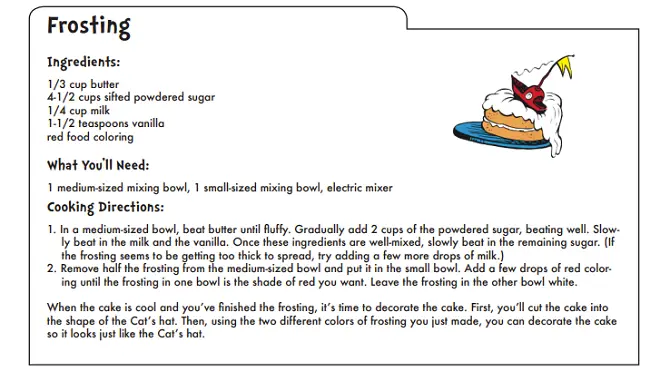
There are many ways you may choose to use this in your classroom. For example, it could be a good reading comprehension task to see how students follow written directions. Since the ingredient list includes fractions, you may also decide to use it as part of a unit on fractions.
Best for: Early to mid-elementary school students who are working on a cooking unit, following written directions, or fractions.
9. How Many Hats?
What You Will Need to Prepare:
- “The Cat in the Hat” by Dr. Seuss
- 1 copy of “How Many Hats” per student
- Pencils
Description: “How Many Hats” is an engaging activity for students who are just beginning to learn how to add numbers. Instead of showing the numerals that need to be added, this print-out displays a number of objects on each side of the plus sign. For example, the first problem shows three hats on the left side of the plus sign and one hat on the right side.

Depending on the skills of each student, they may be able to visually look and add the numbers together, or they may need to count each side of the plus sign and add this to quantities together. Students that need further support could count one side of the plus sign and keep counting on to add the quantity on the other side.
Best for: Kindergarten and first-grade students working on counting and addition.
10. Pin the Eggs
What You Will Need to Prepare:
- “Green Eggs and Ham” by Dr. Seuss
- “Pin the Eggs on the Plate” printout
- Scissors
- Pencils/crayons
- Blank paper
- Tape
- Green jellybeans
- Green stars or green star stickers
Description: This is a good activity to do a class party, or when students have earned the breaker reward for good behavior. It could also be done during Read Across America Day. The activity is based on Pin the Tail on the Donkey, but it has a fun Dr. Seuss twist. Instead of pitting a tail on a donkey, students will need to pin green eggs on Sam-I-Am’s plate with ham.

The printout includes Sam-I-Am’s plate that you can tape up on the wall. Students can make in color their own green egg pictures to try to pin onto the plate.
Best for: Early elementary school students
11. Oh Say Can You Rhyme?
What You Will Need to Prepare:
- “Oh Say Can You Say” by Dr. Seuss
- 1 copy of “Oh Say Can You Rhyme?” per student
- Pencils
Description: Dr. Seuss uses many rhyming words in his books. They can be a great way to help your students hear what rhyming words sound like and identify them when they hear them. For this activity, you will first read “Oh Say Can You Say.” Then students will have to complete a series of rhyming words by filling in the blank for the last word. For example, the first task on the page includes the words lips and flips. It then has “sl_____” where students will need to come up with the word slips to complete the rhyming pattern.

Even though the worksheet only asks students to come up with one more rhyming word, you can challenge them to see how many additional rhyming words they can find.
Best for: First, second, or third-grade students working on rhyming words.
12. An A-maze-ing Journey!
What You Will Need to Prepare:
- “Oh, The Places You’ll Go” by Dr. Seuss
- 1 copy of “An A-maze-ing Journey!” per student
- Pencils/crayons
Description: For this task, you will read “Oh, The Places You’ll Go” by Dr. Seuss. Students can then try to complete the maze on the print out to make it to the center square. Characters form the book are located in different spots of the maze to make it more exciting for students.
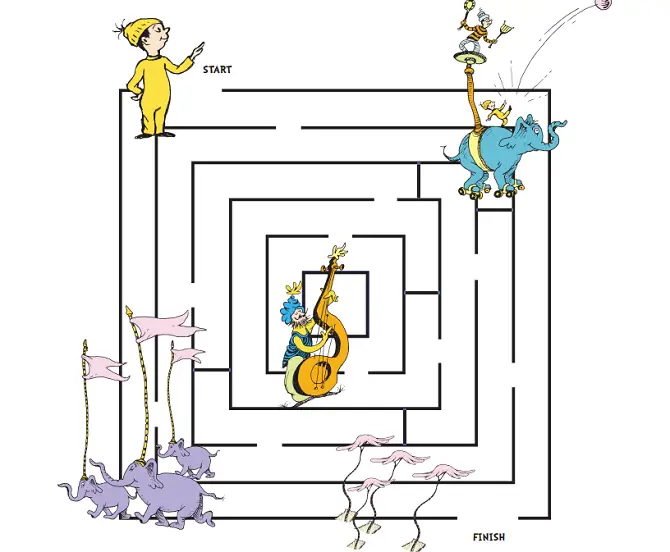
Best for: Early elementary school students
13. World of Seuss Word Search
What You Will Need to Prepare:
- “Horton Hears a Who,” “Yertle the Turtle,” and/or “The Sneetches and Other Stories” by Dr. Seuss
- 1 copy of “World of Seuss Word Search” per student
- Pencils/crayons
Description: This word find was created to be used with “Horton Hears a Who,” “Yertle the Turtle,” and “The Sneetches and Other Stories” by Dr. Seuss. After reading one or more of these books aloud to your students, students can complete the word search to find the names of some of the characters from the stories. There are visual images along with each character’s name at the bottom of the page to provide assistance to students who may not be fluent readers.

Best for: First, second, or third-grade students.
14. Watch Lorax and write an essay “How I can save the Earth”
What You Will Need to Prepare:
- The 2012 movie “The Lorax”
- Writing paper or computers for each student
- Pencils
Description: The central message of “The Lorax” is about the importance of taking care of our Earth and what can happen when we don’t respect nature and cause too much pollution. After having students watch the film, you can lead a class discussion about what students learned from watching the movie and why it is important to take care of our Earth.
Here is the trailer of the movie:
After having this discussion, tell students they should brainstorm a list of things they can do to save the Earth. Tell them they should pick one of their ideas and write an essay about it. The specific requirements you ask for may vary depending on the age of your students.
Best for: Mid to upper elementary school students and middle school students.
15. Grinch Party Poppers
What You Will Need to Prepare:
- “How the Grinch Stole Christmas” by Dr. Seuss
- White string cheese
- Strawberries
- Sliced bananas
- Green grapes
- Chocolate for melting
- Plastic toothpicks
- Piping bags or Ziploc bags
Description: If you’re looking for a fun activity for Read Across America Day or another special occasion in your classroom, these Grinch Party Poppers are a great place. Using simple ingredients, students can create edible treats that look just like the Grinch.

These fun snacks are made by stacking a grape, banana slice, strawberry, and round piece of cheese on a toothpick to create the Grinch. Melted chocolate is used to give the Grinch a grumpy face.
Best for: Elementary-aged students (younger students can help you make these; older students could follow the directions and make them on their own).
Wrap-Up
Incorporating Dr. Seuss’s activities into your day is a sure-fire way to get your students participating and excited about learning. Being a teacher definitely isn’t always an easy job, but finding some ways to keep your students engaged can help.
In addition to not having an easy job, teachers are rarely paid enough to match the amount of work they do. If you are looking for additional ways to earn money to supplement your teaching salary, check out one of these articles on the best ESL online teaching jobs (LINK), best online teaching jobs (LINK), and best part-time or summer jobs for teachers.
Last Updated on July 25, 2022 by Emily
- Facebook9
- Twitter21
- Pinterest67
- 97shares

